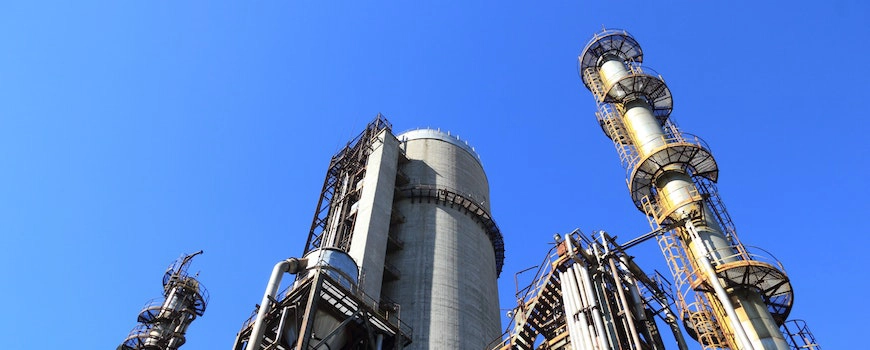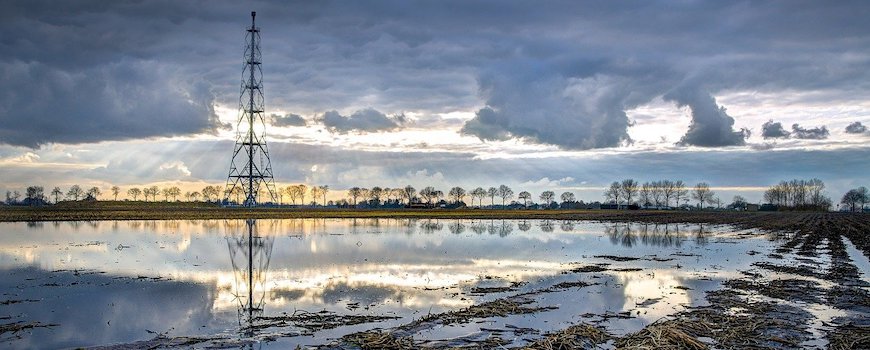
Natural gas or fossil gas is a non-renewable energy source, which is an odorless, colorless, flammable, and non-toxic hydrocarbon. The largest component is methane (CH4). Raw natural gas contains water, ethane, propane, butane, pentanes, hydrogen sulfide, carbon dioxide, water vapor, helium, and nitrogen. Natural gas is a fuel to provide power to factories or even households.
How is natural gas formed?
Natural gas has formed millions and even hundreds of millions of years ago. It is formed from decomposed organisms such as plants, animals, and diatoms. The thick layer of these organisms mixed with sand and silt, and then it is exposed to intense heat and pressure under the surface.
The earth’s inner heat and the growing pressure (every 10 meters means 1 bar increase in pressure) breaks down the carbon bonds in the organisms. This process changed these materials into coal, oil (petroleum), or natural gas.
Read more: What is natural gas?
Natural gas examples
Conventional natural gas:
Conventional gas is accessible because it is trapped under a permeable layer of rock. In most cases, it occurs together with oil reservoir deposits and sometimes it floats on top of the oil, forming a layer on it.
Unconventional natural gas:
Unconventional gas hiding deep below (4500 meters or more) the surface, making extraction difficult. Economically, it is not always viable to extract unconventional gas types, because it is not cost-effective. Yet, new technologies are developing every day to make natural gas extraction easier. Thus, today’s unconventional natural gas types will become conventional in the future.
Deep Natural Gas types belong to the unconventional category. These are hard to extract for different reasons.
- Shale: Shale is a fine-grained, clastic sedimentary rock, composed of mud and it is a massive mineral. It is so tough that drilling into it is a rather costly process.
- Tight gas: It can be extracted only by fracking and acidizing because tight gas is trapped underground in an impermeable rock formation.
- Coalbed Methane: It can occur aside seams of coal. Historically it was the waste product of coal mining, but in recent decades it has become an important source of energy.
- Gas in Geopressurized Zones: Geopressurized Zones form 3000-7600 meters below the surface. It is hard to extract, but gas processing can be viable because a high amount of natural gas hides in this zone.
- Methane Hydrates: It is trapped in places like the Arctic with low temperature and high pressure. Climate change incites the release of methane hydrates into the atmosphere.
Biogas: It contains less methane gas than natural gas, but still a reliable energy source. It is a type of gas that is produced when organic matter decomposes without oxygen being present.
Where does natural gas come from?
Natural gas can be found beneath the ocean or the lands, close to the Earth’s surface or deep below the crust. It can be trapped alone or with oil: as we drill deeper, the possibility of finding natural gas instead of oil is getting bigger.
Most of the reserves are in the Middle East (Iran, Qatar, Saudi Arabia, United Arab Emirates) and Russia. The Middle Eastern countries have over 40% of the world’s natural gas supply, Russia has 24% while the Unites States only possesses 5.3%.
Natural gas extraction: how is natural gas collected?

First, a test well confirms that the deposit has enough natural gas and extracting it can be cost-effective. Then new production wells will be drilled.
Oil extraction often comes with natural gas extraction. There are also examples of natural gas being pumped back into the well for future extraction. After drilling the well, a concrete and metal casing is installed into the hole, and a collection pump is built above this.
Depending on the types of natural gas, collecting this fossil material can be different. Methods:
- Vertical drilling
- Horizontal drilling
- Hydraulic Fracturing / Fracking
- Acidizing
Vertical drilling: the most common method
This natural gas extraction process was the first and only type of natural gas production until 1980. Vertical drilling is efficient when natural gas is close below the surface, so it is efficient in the freeing of conventional natural gas.
The average depth of vertical wells is only 300-800 meters, then they reach the natural gas deposit and the gas can start flowing to the surface. Vertical drilling is therefore limited to the gas reserves it encounters from above, thus it can be the perfect solution in some cases.
Horizontal drilling
Horizontal drilling is a flexible and cost-effective solution to broaden the possibilities of drilling. This way drilling companies can install less drilling sites because after reaching the required depth, the drill can change its way horizontally. With the steerable drill bit, it becomes more productive and can go horizontally through the natural gas deposits.
Hydraulic fracturing / Fracking
Hydraulic fracturing is the exciting side of gas production. This way drilling starts with a generated ‘micro-earthquake’. With high-pressure streams of water, sand, and chemicals it breaks up the formation of rocks. After that, natural gas can flow up to gathering gas pipelines and wells on the surface.
However, this method is banned in some places, because:
- It needs huge quantities of water, which can overwhelm the environment
- Has heavily toxic or even radioactive wastewater which can affect nature if mismanaged.
Hydraulic fracturing or fracking is used to extract unconventional natural gas.
Acidizing
It is a side-operation to any drilling methods, but mainly to fracking. With acid dissolving the rocks that may be on the way of the natural gas, it can flow up to the well.
Conclusion – how is natural gas extracted?
There are many types of natural gas formed, and for each type there is a better way to drill effectively. Oil and natural gas are often found at the same place.
- Vertical drilling is the most common form of drilling in the gas industry. It is useful in cases of conventional natural gas extraction.
- Horizontal drilling broadens the possibilities with a steerable drill bit. This way drilling can reach more reserves with fewer wells installed.
- Hydraulic drilling is the main method to crush the rocks and extract unconventional natural gas. On the other hand, it negatively affects nature.
- Acidizing can help dissolve the rocks blocking the way up.
